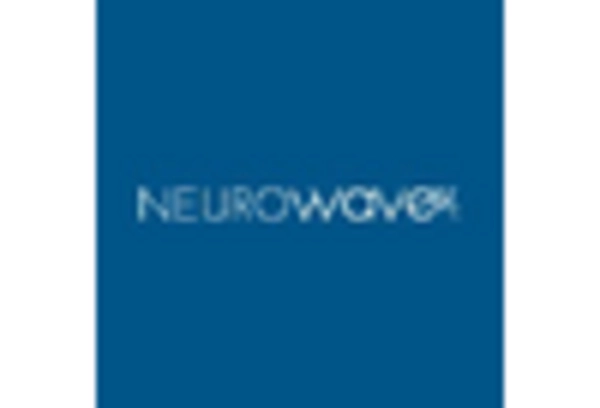Increase in Research Activities
The surge in research activities related to neurological health is a significant driver for the intracranial pressure-monitoring market. Academic institutions and research organizations in Japan are increasingly focusing on understanding the complexities of brain health and the implications of intracranial pressure. This research not only contributes to the development of innovative monitoring technologies but also enhances clinical practices. Collaborations between universities and healthcare providers are fostering an environment where new findings can be rapidly translated into clinical applications. As research continues to expand, it is likely to stimulate demand for advanced monitoring devices, thereby driving growth in the intracranial pressure-monitoring market.
Advancements in Medical Technology
Technological innovations play a crucial role in shaping the intracranial pressure-monitoring market. The development of minimally invasive monitoring devices and real-time data analytics has transformed how intracranial pressure is assessed. In Japan, manufacturers are focusing on creating devices that offer enhanced accuracy and ease of use, which is vital for timely interventions. The integration of wireless technology and telemedicine capabilities allows for remote monitoring, which is particularly beneficial in rural areas where access to specialized care may be limited. As these advancements continue to emerge, they are expected to drive market growth, with an anticipated increase in device adoption rates among healthcare facilities. The ongoing research and development efforts in this sector suggest a promising future for the intracranial pressure-monitoring market.
Government Initiatives and Funding
Government support and funding initiatives are pivotal in propelling the intracranial pressure-monitoring market in Japan. The Japanese government has recognized the importance of advanced medical technologies in improving healthcare outcomes and has allocated substantial resources to support research and development in this field. Various programs aim to enhance the capabilities of healthcare institutions, particularly in neurology and critical care. This financial backing not only facilitates the acquisition of state-of-the-art monitoring devices but also encourages innovation among local manufacturers. As a result, the market is likely to experience growth driven by increased accessibility to advanced intracranial pressure-monitoring solutions, ultimately benefiting patients and healthcare providers alike.
Growing Awareness of Patient Safety
The heightened focus on patient safety and quality of care is significantly influencing the intracranial pressure-monitoring market. In Japan, healthcare providers are increasingly prioritizing the implementation of monitoring systems that can prevent complications associated with elevated intracranial pressure. This awareness is driven by both regulatory requirements and a cultural shift towards patient-centered care. Hospitals are investing in training programs for medical staff to ensure proper usage of monitoring devices, which is essential for accurate readings and timely interventions. As patient safety becomes a central tenet of healthcare delivery, the demand for reliable intracranial pressure-monitoring solutions is expected to rise, further propelling market growth.
Rising Incidence of Neurological Disorders
The increasing prevalence of neurological disorders in Japan is a primary driver for the intracranial pressure-monitoring market. Conditions such as traumatic brain injury, stroke, and brain tumors are becoming more common, necessitating effective monitoring solutions. According to recent health statistics, neurological disorders account for a significant portion of hospital admissions, leading to a heightened demand for advanced monitoring technologies. This trend is likely to continue, as the aging population in Japan further exacerbates the incidence of these conditions. Consequently, healthcare providers are increasingly investing in intracranial pressure-monitoring systems to enhance patient outcomes and reduce mortality rates associated with severe neurological conditions. The market is projected to grow as hospitals and clinics prioritize the acquisition of these critical monitoring devices to address the rising healthcare needs of the population.

















Leave a Comment